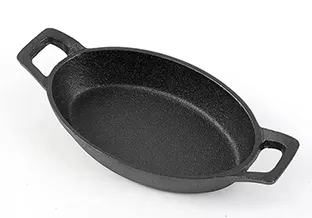
Exploring Various Styles and Uses of Woks in Culinary Practices
Exploring Different Types of Woks A Culinary Essential
Woks have long been a staple in Asian kitchens, revered for their versatility and efficiency in cooking. While they originated in China, their popularity has spread across the globe, becoming a favorite tool for chefs and home cooks alike. Woks come in various shapes, sizes, and materials, each tailored to specific cooking techniques. In this article, we will explore the different types of woks and their unique characteristics.
1. Traditional Round-Bottom Woks
The traditional round-bottom wok is a classic design that has been used for centuries. Its deep, curved shape allows for excellent heat retention and circulation, making it perfect for stir-frying, steaming, and deep-frying. This type of wok is primarily made from carbon steel, which heats quickly and evenly, allowing food to cook rapidly. It is crucial to season the carbon steel wok before its initial use to create a non-stick surface and prevent rusting. These woks require some skill to handle, as they need to be balanced on a high flame and often used with a wok ring for stability on flat stovetops.
The flat-bottom wok is a modern adaptation, designed for use on Western-style stoves. This style has gained popularity due to its versatility and ease of use. Its flat base offers stability and allows for even contact with the heat source, making it suitable for a wide range of cooking methods, such as stir-frying, sautéing, and boiling. While flat-bottom woks may not impart the same smoky flavor as round-bottom versions, they are generally more user-friendly, especially for those who are new to wok cooking.
3. Non-Stick Woks
different types of woks

Non-stick woks have become increasingly popular due to their convenience and ease of cleaning. These woks are typically made with a non-stick coating over materials like aluminum or stainless steel. They are perfect for cooks who want to reduce the amount of oil used in their dishes and minimize food sticking. However, it’s essential to be cautious when using metal utensils with non-stick woks, as scratching the surface can lead to deterioration. While non-stick woks may not achieve the same high heat as traditional woks, they still excel in casual weeknight cooking.
4. Cast Iron Woks
For those who prioritize durability and heat retention, cast iron woks are an excellent choice. These woks are heavy and can take longer to heat up, but once they do, they retain heat exceptionally well. Cast iron needs to be seasoned, just like carbon steel, to create a natural non-stick surface and prevent rust. The benefits of using a cast iron wok include its ability to sear meats and vegetables effectively, as well as its suitability for induction cooking. However, due to their weight, they may not be ideal for everyone.
5. Accessories and Considerations
When choosing a wok, it’s also essential to consider accessories such as lids, spatulas, and wok stands. A lid can be beneficial for steaming, while a long-handled spatula helps stir ingredients without burning your hands. Using a wok ring can stabilize a round-bottom wok on a flat surface.
In conclusion, the type of wok you choose can significantly influence your cooking experience. Whether you opt for a traditional round-bottom wok for its authenticity, a flat-bottom wok for ease, or a non-stick version for quick cleanup, each type has its own strengths. Explore the different types to find the one that best suits your cooking style and kitchen needs, and elevate your culinary creations to new heights!
-
Season Cast Iron Perfectly with GPT-4 Turbo TipsNewsAug.01,2025
-
High Quality Cast Iron Cookware - Baixiang County Zhongda MachineryNewsAug.01,2025
-
Premium Cast Iron Pan: Durable & Perfect HeatNewsAug.01,2025
-
High Quality Kitchen Durable Black Round Cast Iron Cookware Pancake Crepe Pan-Baixiang County Zhongda Machinery Manufacturing Co., Ltd.NewsAug.01,2025
-
Cast Iron Cookware - Baixiang County Zhongda Machinery | Nonstick, Heat ResistanceNewsAug.01,2025
-
High Quality Kitchen Durable Black Round Cast Iron Cookware - Baixiang County Zhongda Machinery | Non-Stick, Heat Retention, DurableNewsJul.31,2025


